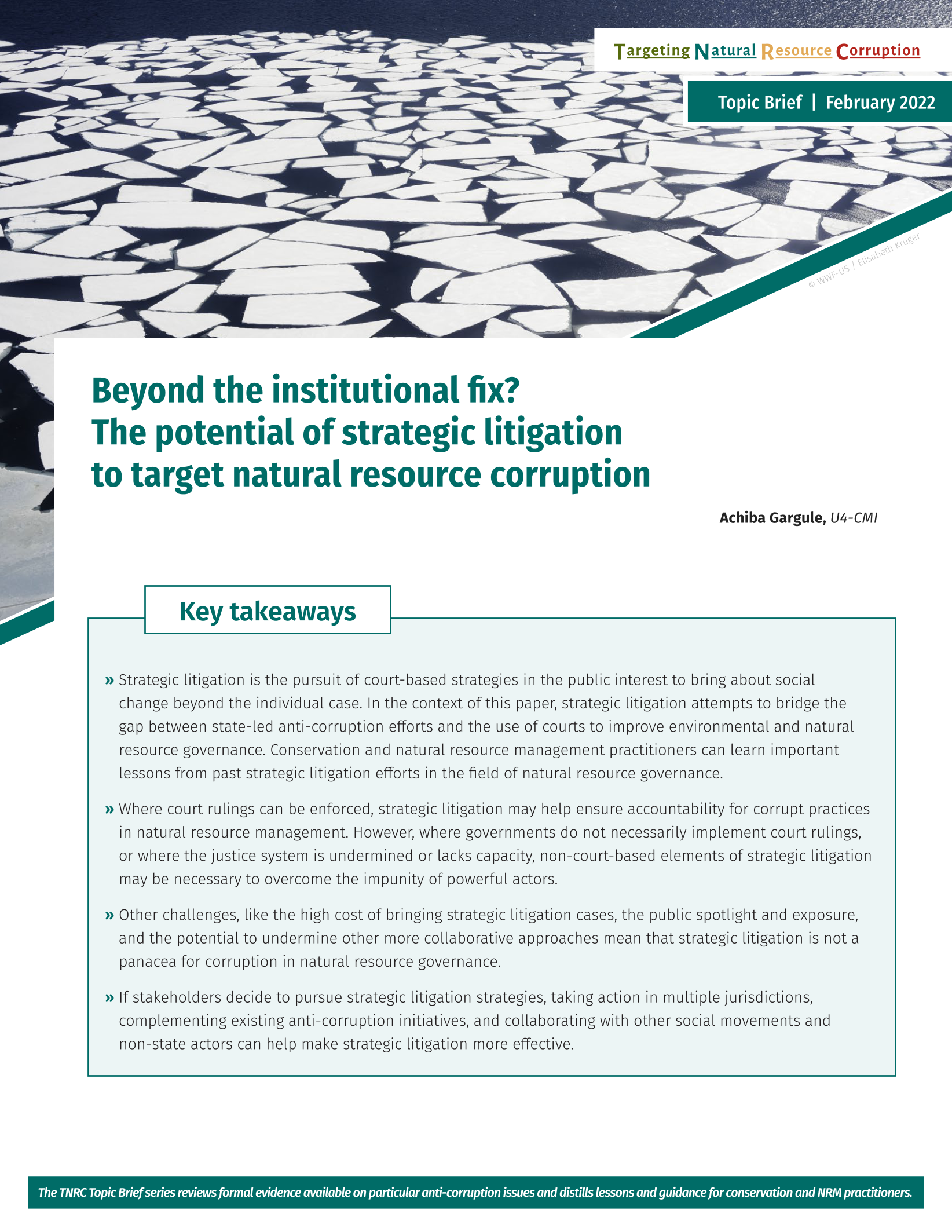Main points
- Strategic litigation is the pursuit of court-based strategies in the public interest to bring about social change beyond the individual case. In the context of this paper, strategic litigation attempts to bridge the gap between state-led anti-corruption efforts and the use of courts to improve environmental and natural resource governance. Conservation and natural resource management practitioners can learn important lessons from past strategic litigation efforts in the field of natural resource governance.
- Where court rulings can be enforced, strategic litigation may help ensure accountability for corrupt practices in natural resource management. However, where governments do not necessarily implement court rulings, or where the justice system is undermined or lacks capacity, non-court-based elements of strategic litigation may be necessary to overcome the impunity of powerful actors.
- Other challenges, like the high cost of bringing strategic litigation cases, the public spotlight and exposure, and the potential to undermine other more collaborative approaches mean that strategic litigation is not a panacea for corruption in natural resource governance.
- If stakeholders decide to pursue strategic litigation strategies, taking action in multiple jurisdictions, complementing existing anti-corruption initiatives, and collaborating with other social movements and non-state actors can help make strategic litigation more effective.




